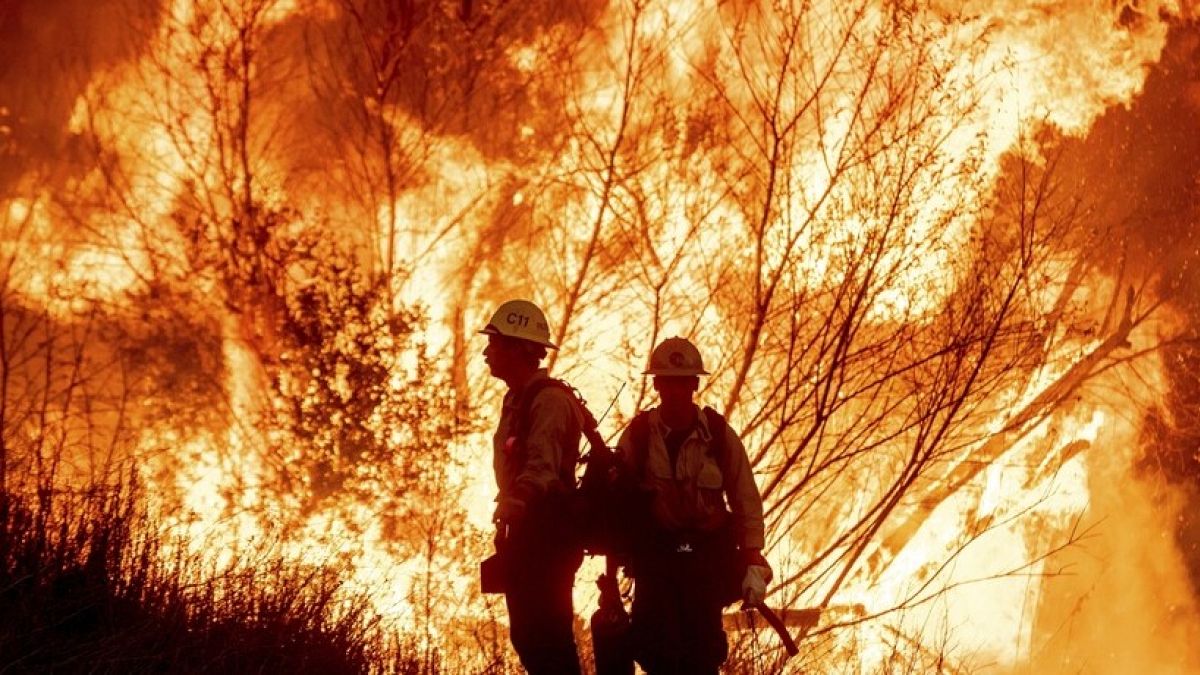2024 the first year to exceed 1.5°C and hottest on record

Experts say the world is now ‘teetering on the edge’ of passing the crucial 1.5°C warming limit.
2024 was the warmest year on record and the first calendar year where the global temperature exceeded 1.5°C above pre-industrial levels, according to Copernicus Climate Change Service (C3S).
Scientists had suspected 2024 would clinch the record and now it has been confirmed.
Each of the last 10 years – from 2015 to 2024 – was one of the 10 warmest on record, according to the EU climate monitoring service. Its 2024 Global Climate Highlights report outlines the exceptional conditions the world experienced last year.
“We are now teetering on the edge of passing the 1.5ºC level defined in the Paris Agreement and the average of the last two years is already above this level,” says Samantha Burgess, strategic lead for climate at the European Centre for Medium-Range Weather Forecasts.
“These high global temperatures, coupled with record global atmospheric water vapour levels in 2024, meant unprecedented heatwaves and heavy rainfall events, causing misery for millions of people.”
Europe saw extreme weather sweep the continent throughout the year, with hundreds of lives lost in disasters like the Valencia floods, Storm Boris and sweltering summer heatwaves in the Mediterranean.
What does this mean for the 1.5C Paris Agreement limit?
Last year was the first year to exceed 1.5°C above pre-industrial level and the two-year average from 2023 to 2024 also exceeds this threshold.
The limit set by the Paris Agreement refers to temperature anomalies averaged over at least 20 years so this hasn’t yet been broken. The data, however, underscores that global temperatures are now rising beyond what modern humans have ever experienced before.
“Hopefully that is really a wake-up call for humanity,” says Intergovernmental Panel on Climate Change (IPCC) vice chair Diana Urge-Vorsatz.
Currently, the IPCC believes we’ll exceed the Paris Agreement limit around the early 2030s.
“There is a very intense debate going on among the climate scientist community, about whether global warming is accelerating or not due to these really extreme temperatures in the last two years,” Urge-Vorsatz notes.
Temperatures didn’t return to the “old normal” after the El Niño climate phenomenon ended and instead exceeded the 2023 record.
A reduction in air pollution, which may have been reflecting solar radiation and masking the true extent of global warming, could be responsible. Global warming itself might be reducing low-level cloud cover and increasing temperatures.
A multitude of other factors could be to blame for what appears to be an acceleration in warming.
“There is no consensus on this yet,” Urge-Vorsatz emphasises. On the other side of the debate, scientists see this “blip” as falling within projections for global warming.
“A lot of scientists do feel that actually the previous climate models still fully explain this.”
“We will only know in a few years whether this was just a natural variability blip or it is due to some phenomena that we have not yet understood.”
Did record temperature fuel 2024’s deadly weather?
Last year brought many deadly extreme weather events around the world from severe storms to flooding, drought, heatwaves and wildfires. As these events become increasingly frequent and intense, people’s lives and livelihoods across the globe are threatened.
In 2024, the total amount of water vapour in the atmosphere reached a record high – around 5 per cent higher than the average from 1991 to 2020 and significantly higher than in 2023.
“The majority of the excess heat that we have been trapping as a result of the greenhouse effect and human activities have been absorbed by the oceans and ocean heat content has been increasing very alarmingly,” says Urge-Vorsatz.
“Hotter sea surfaces are able to evaporate more. So that means that as a result, we are seeing higher humidity levels and higher water vapour.”
The unusually moist atmosphere amplified the potential for extreme rainfall and, combined with high sea surface temperature, contributed to the development of major storms including tropical cyclones. This doesn’t mean more precipitation everywhere but does mean more intense rain where it does fall and even drought in other parts of the world as the water cycle becomes more intense on both ends of the scale.
Prolonged periods of dryness in some parts of the world also created conditions conducive to wildfires. In the Americas, large and persistent blazes were recorded last year. Bolivia and Venezuela recorded their highest levels on record, while Canada saw its second-highest levels, based on data from the Copernicus Atmosphere Monitoring Service (CAMS).
High temperatures can have deadly consequences
High temperatures themselves are a danger. Alongside other environmental factors like humidity, they can stress the body from overheating.
More humid air means we struggle to get rid of excess heat through sweat. This combination of lethal heat and humidity could impact 3.5 billion people on the planet by 2070 according to some research.
Last year, much of the globe experienced more days than average with at least ‘strong heat stress’. Some regions also saw more days than average with ‘extreme heat stress’, at which level it is imperative to take action to avoid heat stroke.
“Every fraction of a degree matters, because even with this slight increase, we already see that that range of the world getting more exposed to heat stress,” says Urge-Vorsatz.
We are reaching the limits of adaptation in more and more parts of the world as we reach temperatures where our bodies struggle to get rid of heat. Switching on the air conditioning isn’t a possibility for many.
Are we doing enough to stem global warming?
“We are doing a lot already, but we need to do more and be more ambitious in more areas,” Urge-Vorsatz says.
Europe, for example, has been very successful in upscaling renewable energy like wind and solar in just a decade or so. Since the Paris Agreement, the world has already avoided the worst-case warming scenarios.
“We no longer expect that the world could warm 5 to 6 degrees by the end of the century, which is a really big deal because just when we agreed on the Paris Agreement, these were all potentially possible or just plausible scenarios,” she adds.
But we still aren’t doing enough. Our hunger for energy is growing faster than we can deploy renewable sources, electric vehicle uptake is slower than needed and fossil fuels aren’t being phased out fast enough.
“All of the internationally produced global temperature datasets show that 2024 was the hottest year since records began in 1850,” says Carlo Buontempo, director of C3S.
“Humanity is in charge of its own destiny but how we respond to the climate challenge should be based on evidence. The future is in our hands – swift and decisive action can still alter the trajectory of our future climate.”
The plethora of extreme weather events in 2024 is also a reminder that adapting to the realities of climate change is vitally important.
“Even if we managed to cap global warming at 1.5C, there is still more warming to come. And already the present warming really requires us to have a much stronger effort at adaptation,” Urge-Vorsatz adds.
In Europe, some of the events of the past year have been a wake-up call about preparedness for events like extreme flooding or drought and heat waves. But we can still do better, especially for heat waves which aren’t always as visually arresting as other deadly events.
World News || Latest News || U.S. News
Source link



